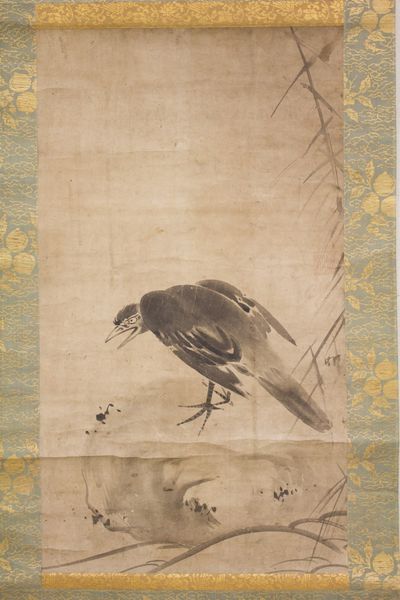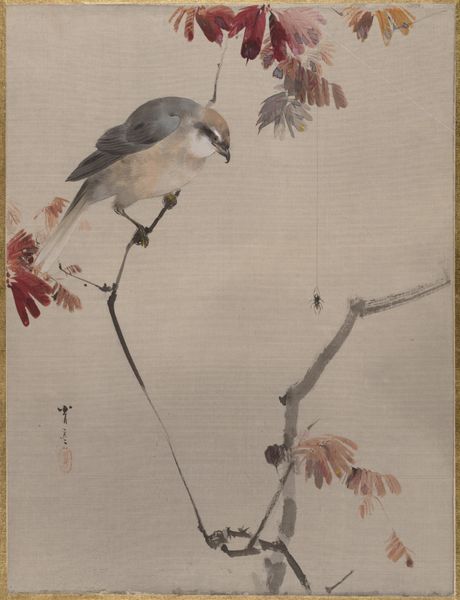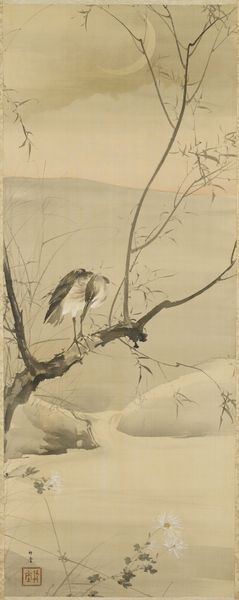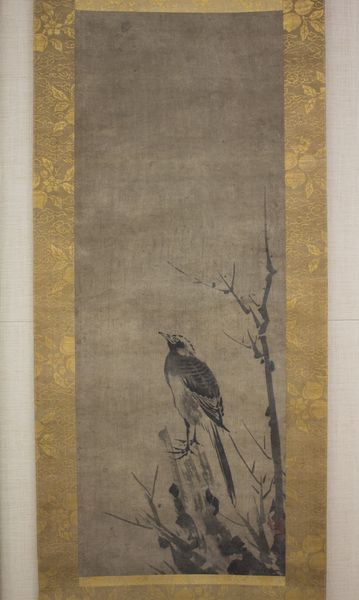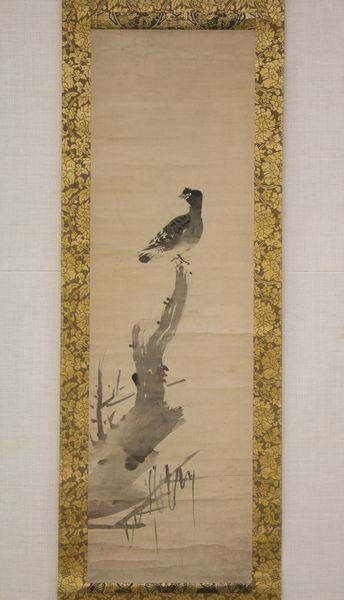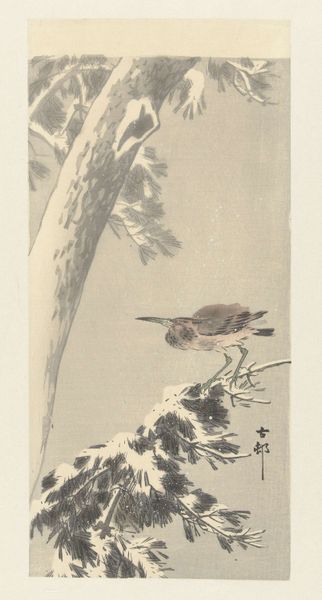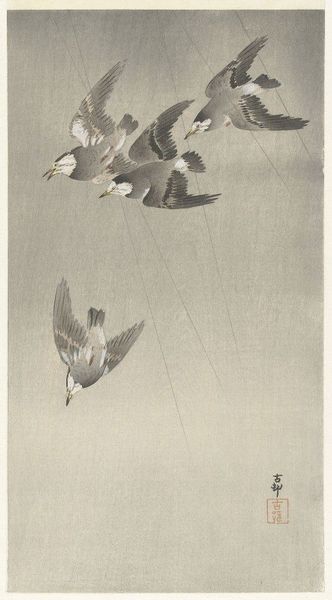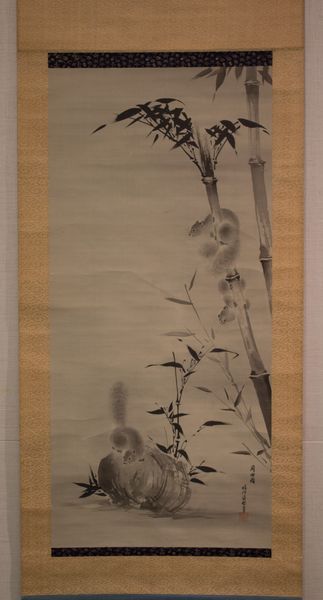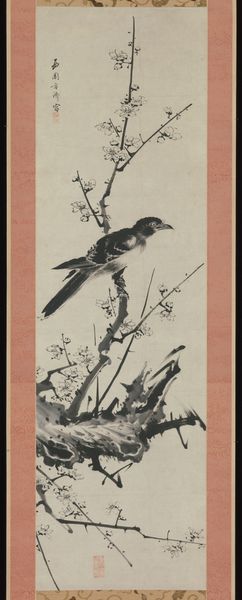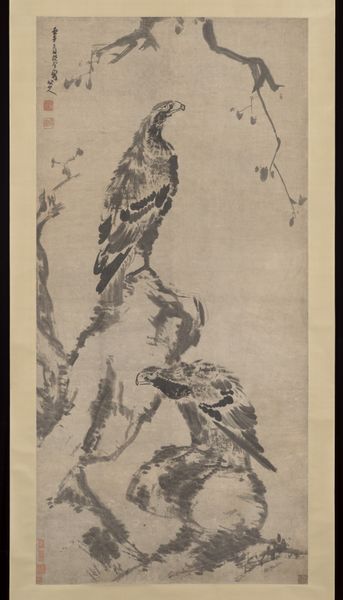
painting, ink
#
ink painting
#
painting
#
asian-art
#
landscape
#
ink
#
orientalism
Dimensions: Image: 39 1/4 × 16 1/8 in. (99.7 × 41 cm) 71 1/4 × 21 in. (181 × 53.3 cm) Overall with mounting: 71 1/4 × 22 1/8 in. × 1 in. (diam. of knob) (181 × 56.2 × 2.5 cm)
Copyright: Public Domain
Curator: Here we have "Heron and Willow," an ink painting likely created during the 18th or 19th century. It is part of the collection here at the Metropolitan Museum of Art. What are your initial impressions? Editor: Austere, definitely. The limited palette focuses attention, I think, on the compositional elements: the bird's position, the lines of the willow. It seems… contemplative. Curator: I find the starkness compelling too. Thinking about the materials and method of its making, imagine the artisan carefully grinding the ink stick, preparing the paper, knowing each brushstroke had to be precise, almost meditative. It was an intentional performance involving laborious techniques and specific artistic lineages. Editor: Absolutely, and I would argue that that precision—the modulation of ink, the controlled washes, and even the negative space—constructs meaning itself. Observe how the slanting branch creates dynamic diagonals countered by the bird's more stable, perpendicular stance, all within the confines of the paper. Curator: And consider the availability of these materials and their place in the global networks of the time. The ink itself speaks to the history of trade and artistic exchange, where knowledge and tools were disseminated across cultural boundaries and consumed to reproduce scenes reflecting certain idealized concepts of nature. Editor: True. But those idealizations themselves rely upon formal conventions. Notice, for example, how the blurred washes in the background set off the finely rendered feathers. Those sharp details offer a compelling contrast to that ambiguity, lending the image clarity as a structural, aesthetic element. Curator: But to separate that artistry from the economic reality of its production is to misunderstand that artists throughout time had specific labor expectations and the patrons consuming these types of images were as significant as the image-making itself. What would be so radically different from those same motivations today? Editor: Well, seeing it through the lens of your analysis on these networks reveals those connections to other commodities, labor systems, artistic influences that shift our understanding about this work. Thanks, I find these kind of production details crucial for an interpretation about its overall appeal. Curator: And analyzing these elements and techniques is so important for decoding not only what it looks like, but how, when, and even *why* this work took form in the first place. It creates a framework for the future of art, where the same challenges might be replicated in unique, contemporary formats.
Comments
No comments
Be the first to comment and join the conversation on the ultimate creative platform.

